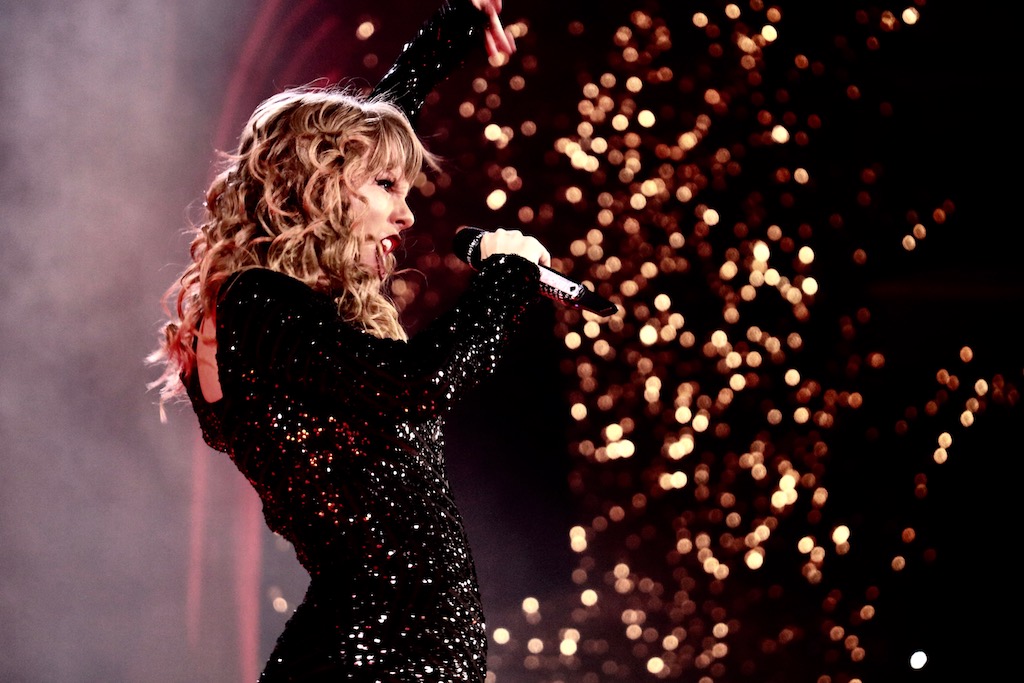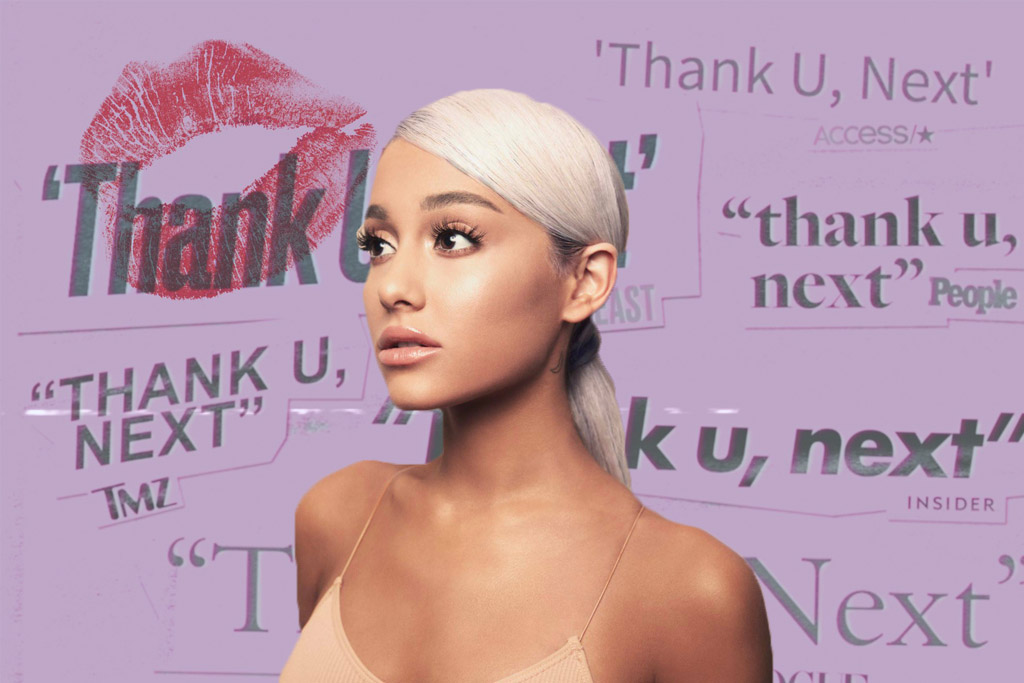How I Learnt To Stop Worrying And Love Taylor Swift’s ‘Fearless’
"Important music wasn't made by eighteen-year-old girls with long blonde ringlets talking about crushes on boys. It was made by twenty-seven-year-old men with long fringes, talking about their crushes on girls."

— This article was first published on the anniversary of Fearless in 2018. —
This past weekend marked a decade since the release of Taylor Swift’s album Fearless, the record that launched Swift from Nashville teen sensation to internationally successful artist.
Sure, Swift was still wearing cowboy boots with sundresses and writing songs about high school, but Fearless vastly improved upon her debut, with a more cohesive sound and bigger hooks. It delivered colossal pop singles like ‘You Belong With Me’ and ‘Love Story’, making Swift a household name.
It has also been a decade since I found a shiny new Fearless CD in my then-boyfriend’s glove compartment and consequently spent the rest of our road trip roasting him for liking Taylor Swift. I couldn’t believe it. Her name was the zeitgeist’s shorthand for music it was uncool to like. How could he look me in the eye and tell me he enjoyed pop-country songs about being a teenage girl?
We were in our twenties, we were smart, we were English majors for God’s sake; I continued to needle him about his manhood with the dickish vigour of someone who is misdirecting a deep, unaddressed anger.
It didn’t matter that I hadn’t actually heard the album. I knew it couldn’t be good: important music wasn’t made by eighteen-year-old girls with long blonde ringlets talking about crushes on boys. It was made by twenty-seven-year-old men with long fringes, talking about their crushes on girls.
Important music wasn’t made by eighteen-year-old girls with long blonde ringlets talking about crushes on boys.
That’s why I lectured my then-boyfriend about the importance of indie band Snow Patrol’s third album Final Straw, the one before they “sold out” (selling out in my mind back then meant having a song on Grey’s Anatomy, which I secretly loved.) I felt righteous in my musical taste. I was unconsciously committed to maintaining this strict hierarchy of “important” music.
Finding out that the masculine, cishet philosopher king I was dating openly enjoyed Taylor Swift without shame made me angry. Back then I didn’t know why I was angry, didn’t even recognise the emotion for what it was. But I think I know now: I was bitter because he was freely enjoying something that I’d had to give up.
How Can Music Made By Women Possibly Be Cool?
By the time I turned thirteen, I knew it wasn’t cool to enjoy ‘teenage girl’ things. Things made by or for young women were (and usually still are) treated as frivolous. You were unsophisticated if you liked those things.
I learned to stop talking about Nelly Furtado’s ‘Like A Bird’ (fucking pop gold, by the way) and covered my school diary with a picture of Weezer. It was social survival; even the most popular, most feminine girls at my high school talked about Paul Dempsey instead of Delta Goodrem.
As a gender-non-conforming dork whom other kids bullied, I was already vulnerable, and I wanted to fit in. So I did what a lot of unpopular nerds do — I took refuge in a pseudo-intellectual indie persona. Compared to the surf jock girls at school, I found indie kids to be a slightly more welcoming scene: you could wear jeans to everything and it was okay to be a smart girl (as long as you didn’t talk about being a girl.)
Burying my joy for feminine pop music made me deeply sad, but the thing about patriarchal conditioning is that it convinces you there’s no other way to be. Everyone has to follow the rules. If you meet someone who isn’t following the rules, it can trigger a primal fear and rage inside you — because if they’re out there ignoring gender norms, does that mean you could have, too? Did you excoriate those treasured parts of yourself for nothing?
Fearless feels like being a teenage girl felt — at least for me, at least for part of the time. It has the sparkling hope of a young woman thrilled to finally be stepping into adulthood (‘Fearless’, ‘Fifteen’), impatient to live out the romances she’s grown up on (‘Love Story’), chiding her crushes for not noticing her (‘Hey Stephen’, ‘You Belong With Me’). She’s looking forward to a future outside of school and away from her small hometown.
Did you excoriate those treasured parts of yourself for nothing?
Even amid the quiet devastation of ‘White Horse’, Swift asserts that she’s “going to find someone someday who might actually treat [her] well.” Swift maps the interior world of a girl waiting for her real life to begin, so she can get off the bleachers and shed this awkward phase.
I was that girl, and I think the earnest reflection of my romantic dreams and disappointed hopes was a big part of why I resisted Fearless and Taylor Swift for so long.
Losing My Poptimism
When Fearless was released in 2008, I was a 22-year-old woman and already quite hardened by disappointment. Like 22 percent of Australian woman in 2008, I was experiencing sexual harassment (the national number has since grown to 38 percent.) Men harassed me at work, at home, on the street, on dates — and my experiences were so consistently dismissed by friends, family, coworkers and boyfriends that I had little faith left in the world of romance Swift sang about.
That sweet, hopeful 18-year-old girl I’d once been now seemed like a gullible patsy of the patriarchy, and I didn’t want to be reminded of the dreams I’d once had. I thought I’d hardened myself against weakness, and even though I regularly belted out ‘Love Story’ at karaoke I told myself I was doing it ironically. In essence, I had lost my poptimism.
In a 2008 profile of Swift, The New York Times said the “almost radical intimacy” of her songwriting was being heralded as a welcome change from the Disney-manufactured powerhouse pop being marketed to girls. The radical element to Swift was that she wrote about her own life experiences as they happened.
That’s something that young men have been doing forever without comment, but it’s subversive when it comes from a young woman who refuses to compromise her femininity. She didn’t present a hypersexualised image of herself, or pretend to be older than her age; Swift wrote with raw sincerity about being a girl, and I think that’s what many of us cringed away from.
Strange to say, I now identify as a massive ‘Swiftie’. Sure, I cop shit for it — one young woman even doubted my integrity as a writer because I enjoy Swift’s music. Friends have admitted that they had heard of me long before they met me — not as a writer or performer, not as a disability advocate, but as “that girl who likes Taylor Swift”.
It’s an oddity to people. Strangers expect me to explain my enjoyment of her music in a way I was never asked to when I used to talk about Snow Patrol, Death Cab For Cutie, Muse, or any of the myriad all-man indie bands I have loved. Those bands all write emotional songs about relationships — but in the right key of gender, I suppose.
We Actually Are Getting Back Together
Things changed when we got to Taylor Swift’s fourth album. RED. Of all her albums, this was her hardest push to create an ‘indie rock’ visual aesthetic.
It was her era of skinny jeans, brogues and wide-brimmed felt hats. I’ve often wondered if she was trying to prove her worth to that ex from ‘We Are Never Ever Getting Back Together’, about whom Swift sang: “You would hide away and find your peace of mind with some indie record that’s much cooler than mine.”
But it feels like it’s getting safer — and even important — for us to embrace our neglected femininity.
RED was the first album on which Swift co-wrote mainly with men. It’s a bit shameful to me that it was the first album on which I took her seriously as an artist, because it’s coincidentally also the one on which she collaborated with Gary Lightbody of Snow Patrol. It was as if I needed someone like him to validate her worth for me.
With RED, 1989 and reputation, Swift overwhelmingly collaborated with men. She was criticised for making her infamous 2016 Grammys speech “to all the young women out there” while surrounded on stage by a phalanx of all-men collaborators, but she was still the first woman to win Album of the Year twice. (Fifty years after the first person to win the award twice, Frank Sinatra in 1966.) The music industry is a tough place to survive for women.
On Fearless, Swift co-wrote with almost all women. Back in 2008 she was singing earnest songs about her best friend Abigail, and the boy-next-door, and dancing in the rain in her best dress.
Now, ten years later, Swift has declared the old Taylor dead, but her reputation stadium tour has seen her revisiting songs she wrote in her teens and dancing in a rainbow frock next to her women tourmates. Maybe, as femme-identifying women surviving a patriarchal world, we all harden a little.
But it feels like it’s getting safer — and even important — for us to embrace our neglected femininity. I’m revisiting Fearless with a wiser and softer heart. Ten years on, I’m finally less afraid.
—
Kaitlyn Blythe is a Melbourne-based writer and performer. You can find out more about her work here.

